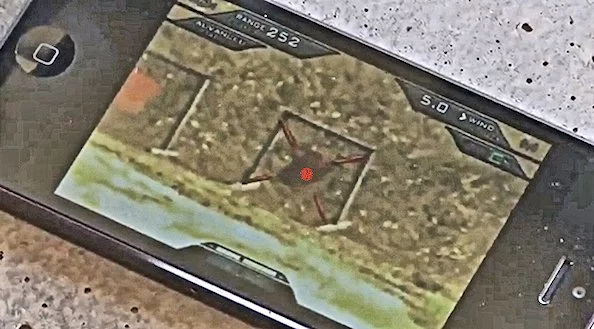TrackingPoint, Inc., a precision guided rifle development company operating out of Austin, Texas, has developed breakthrough technology that claims to put jet fighter lock-and-launch technology onto a combat rifle, making sniper-level accuracy available to the average shooter.
Jason Schauble, the president of TrackingPoint, has taken on many challenges in his time. A past vice president of Remington’s Global Military Products, he is also a retired special ops Marine captain who won both Silver and Bronze Star medals in Iraq. Schaubel is now applying his "bold leadership, wise judgment, and complete dedication to duty" to leading TrackingPoint out of stealth mode and into a prominent position in the world of advanced tactical weapons.
TrackingPoint claims that their patent pending Intelligent Digital Tracking Scopes (tracking scopes) will allow an unskilled accurately hit long-range targets. How?
Initially, the view through a tracking scope is simply a magnified view of the target along an axis parallel to the rifle barrel. The shooter first "tags" a target by choosing a desired impact point on the target's surface. An electronic display adds a red dot that indicates the desired impact point, which remains fixed on the target as the direction of the rifle changes.
If the shooter fired the gun at this point, the result would be a clean miss. Between gravity, atmospheric drag, parallax, and cross-winds, bullets don't follow a straight path. What the shooter needs is a firing solution telling him where to point the rifle barrel so the bullet will hit the desired impact point when fired.

Now the riflescope computer displaces the aiming cross-hairs so that they indicate the bullet's impact point as predicted by the firing solution. If the trigger is now squeezed, the rifle will not fire until the desired impact point and the predicted impact point are sufficiently close together. At 1000 yards (914 m), most shots should hit within the width of a single hand.
In January, TrackingPoint plans to introduce three precision guided rifles. The XS1 will be a tactical rifle chambered in .338 Lapua Magnum, one the remaining candidates for the new US special ops sniper caliber. The XS2, and XS3 will be smaller versions of the XS1 chambered in .300 Winchester Magnum cartridges.
Rumors of retail prices in the US$15-20K range have been reported, but there have been no formal announcements as yet. The video below gives a useful summary of TrackingPoint's efforts to date combined with their aspirations.
Source: TrackingPoint, via The Firearm Blog



